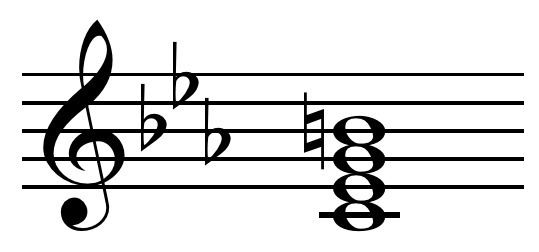 | ||
The jazz minor scale is the ascending melodic minor scale used both ascending and descending. It may be produced from the major scale with a minor third, making it a synthetic scale, and features a dominant seventh on the fifth degree (V) like the harmonic minor scale. Starting on A, 1 2 ♭3 4 5 6 7 8:
A B C D E F♯ G♯ A
The scale may be considered to originate in the use of extensions beginning with the seventh in jazz and thus the necessity to, "chromatically raise the diatonic 7th to create a stable, tonic sound," rather than use a minor seventh chord, associated with ii, for tonic.
The jazz minor scale contains all of the altered notes of the dominant seventh chord whose root is a semitone below the scale's tonic. "In other words to find the correct jazz minor scale for any dominant 7th chord simply use the scale whose tonic note is a half step higher than the root of the chord." For example, the G7 chord and A♭ jazz minor scale: the A♭ scale contains the root, third, seventh, and the four most common alterations of G7. This scale may be used to resolve to C in the progression G7-C (over G7, which need not be notated G7♭5♯5♭9♯9).
It is used over a minor major seventh chord. See: chord-scale system. The scale also easily allows diatonic chord progressions, for example: |: C-Δ7 / A-7♭5 | D-7 / G7♭13 :|
Play a I−vi−ii−V progression.
Its modes also include Lydian ♯5, Lydian ♭7, Locrian ♮2, and the altered scale.
